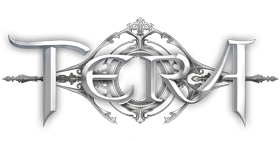In-Depth TERA Interview with Brian Knox
You voted. We delivered. An in-depth interview with the Executive Producer of En Masse Entertainment, Brian Knox, about your most anticipated game of E3: TERA

You voted on our Zam poll and overwhelmingly chose TERA as your most anticipated MMO for E3. So we tracked down Brian Knox, Executive Producer at En Masse Entertainment and asked him our toughest questions, many of which we got from your own forum comments. Here's our pre-E3, sneak peek into the much anticipated world of TERA.
MisterBones: TERA is described as the next generation MMO. Specifically, which last generation MMO conventions do you want to move away from? Do you think point-and-click combat is boring?
Brian Knox: TERA's developers started with the idea that players should be focused on the middle of the screen where the action happens, not on the UI surrounding it. TERA is an evolution in the MMO genre as it blends console style action with the traditional MMO elements we all love. Personally, I believe repetitive and non-dynamic gameplay becomes boring over time, which is why I am so excited that our combat is action based. Each battle feels unique--no two encounters play out the same way.

MisterBones: Let’s talk about the combat. How do you plan to appeal to hardcore action gamers as well as casual gamers who might have trouble with the pacing of an action game?
BK: The good thing about action combat is that it lets the player’s skill determine the complexity. We worked very hard to make the game intuitive for any gamer, and we believe players will really be able to stretch the system. For example, one person playing as a sorcerer might be more inclined to use area-of-effect skills and dodging, whereas another may choose to use direct damage skills and focus on healing. Each class has a lot of variables, and gamers are going to be able to play the game the way they want.
MisterBones: During our TERA demo at GDC, we were told that the player’s focus would be on the targeting reticule and not hitting icons like a game of “whack-a-mole.” How will players activate class skills and still keep their focus on what they’re attacking?
BK: TERA’s combat system doesn’t have 200 separate skills around the edge of the screen that a player has to remember to hit depending on each combat scenario. We’ve streamlined the skill system to allow the player’s own skill to take over. Think about it in terms of a console action game: you have a bunch of skills that are mapped to buttons, and after some play you just know what to hit and when to hit it. TERA feels a lot like that.
MisterBones: Since this is a beautiful and fast action game, how do you plan to maintain hit detection and avoid lag in the US, where the average ping can spike up to anywhere from 100 ms to 250 ms?
BK: A lot of testing and optimization! We have been running Focus Group Tests here in North America and have had very positive responses from our testers. Lag has not been an issue.

MisterBones: Some of the locations have towering, monolithic structures at their center. One of the videos shows an aerial shot of a giant wheel and another location with a humongous, beautiful tree. What can you tell us about these places?
BK: You’ll find these epic landmarks in every area of the game. Not only do they showcase the excellent work done by our artists and designers using the Unreal engine, but each is relevant and useful in-game. The Great Wheel is at the heart of Velika (the first big city the players visit) and was built to honor the goddess Velik. The beautiful tree in the center of the Island of Dawn is a mystery currently being researched by the Mysterium and the Explorer’s League.
Not only are these landmarks a part of the game lore, they’re also useful as navigational aids. If you ever get lost or disoriented, just look up!





